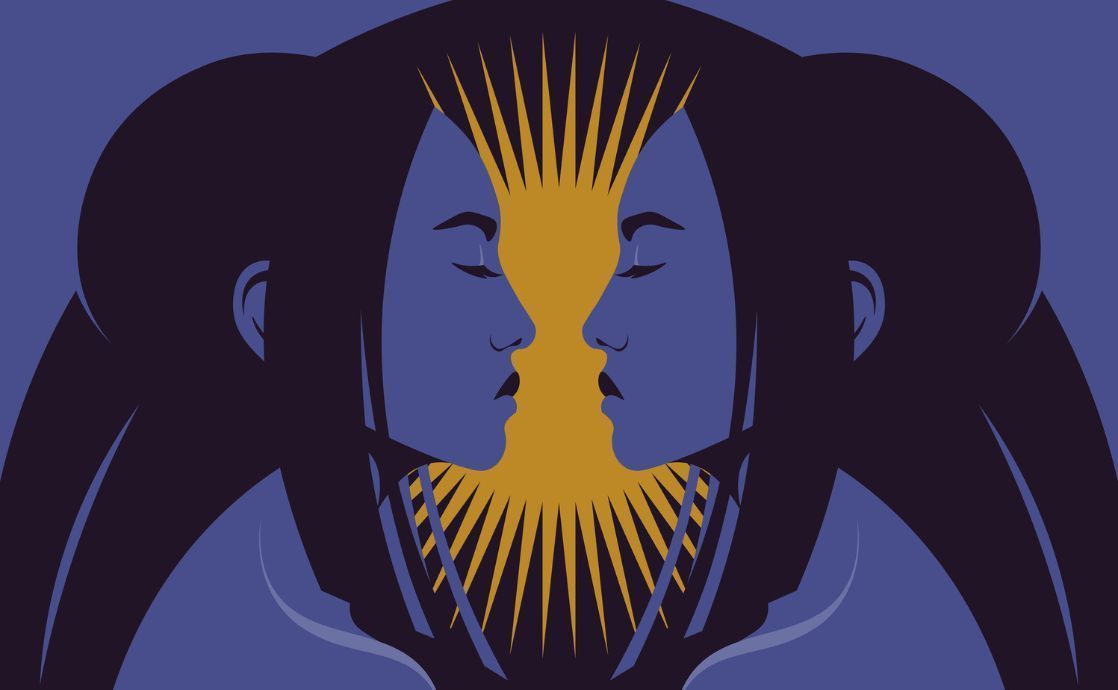Throughout history, the quest for understanding self and the universe has led humanity down numerous paths of inquiry, an exploration that intertwines spirituality, philosophy, and even the sciences. The Bahá’í teachings, with their emphasis on the oneness of humanity and the search for truth, provide a profound framework for contemplating the intriguing notion of having a twin or doppelgänger lurking somewhere in the realms of existence. This reflection invites individuals to reconsider their perspectives on identity, connection, and the metaphysical interconnections that define our realities.
The concept of a doppelgänger—a double or counterpart to one’s self—captures the imagination and stirs a myriad of questions about our existence. In folklore and literature, doppelgängers often embody the duality within a person, serving as a mirror that reflects hidden aspects of the psyche. Drawing from Bahá’í teachings, we can expand this concept beyond the mere physical realm and explore its spiritual implications, inviting a fertile dialogue on what it means to truly know oneself.
Exploration of Identity Within Bahá’í Context
Within the Bahá’í framework, the concept of identity transcends the mere physical attributes of an individual. The teachings of Bahá’u’lláh encourage individuals to explore their inner selves, recognizing that the true essence of a person is not confined to the corporeal vessel. The exploration of identity is rooted in the belief that every human being possesses an inner spiritual essence, or “rûh,” which remains constant despite the various external manifestations of life.
This brings us to the intriguing question: If each individual is a unique expression of a greater spiritual reality, could it be that we all possess a doppelgänger in a metaphorical sense? The Bahá’í perspective posits that every person embodies qualities inherent to the human spirit—qualities such as love, compassion, and knowledge. In this light, a “twin” could represent the qualities we aspire to develop, reflecting the potential that lies dormant within each of us.
The Role of Connection and Interconnection
The concept of having a twin or doppelgänger extends into the realm of human connection and interdependence. The Bahá’í teachings emphasize the unity and interconnectedness of humanity. It is a fundamental belief that we are all threads woven into the fabric of existence. Our individuality contributes to the larger tapestry of our collective human experience. As we embark on the journey of self-discovery, we learn to appreciate the reflections of ourselves found in others—those bonds that echo the traits, struggles, and triumphs we may observe in our fellow beings.
This interdependence can offer profound insights into how we perceive others as reflections of ourselves. When we acknowledge the doppelgänger effect present in our relationships, we can cultivate empathy and understanding. This realization urges us to examine how our actions resonate in the interconnected web of society—a reminder that the essence of our spirit and the energy we exude ripple beyond our immediate surroundings.
Shifting Perspectives on Life’s Journey
Moreover, the idea of encountering a doppelgänger can serve as a powerful metaphor for the spiritual journey each individual undertakes. The existence of a twin in the spiritual realm encourages deeper reflection on one’s life choices and experiences. It invites a paradigm shift wherein failure and success are not mere opposites but are seen as twin facets of personal growth. This shift in perspective can propel believers toward a more profound understanding of their life’s purpose, as they navigate the intricate currents of personal evolution.
In the Bahá’í tradition, individuals are encouraged to see life as a school—each experience, whether joyful or painful, serves as a lesson that contributes to the unfolding narrative of the soul. This viewpoint enables a departure from the linear understanding of time and existence, calling adherents to comprehend that every encounter, every challenge, and every triumph may lead them to discover their ‘twin.’ Therein lies the beauty of the spiritual journey—a pursuit in which every moment is a potential epiphany waiting to be unveiled.
A Call to Broaden Inquiry
Ultimately, the inquiry into the existence of a twin or doppelgänger should prompt a broader examination of one’s life through the lens of spirituality. By entertaining the possibility of such reflections, individuals can cultivate a deeper awareness of their relationships, their perceptions, and their actions in the world. This exploration not only enhances personal growth but also fosters a compassionate engagement with the challenges and joys that form the human experience.
The Bahá’í teachings remind us that the journey is not solely about the self or the search for external encounters; it is a profound engagement with the inner landscape of being. Through this exploration, individuals may recognize that the doppelgänger they seek is not an anomaly in the cosmos but an integral part of their spiritual existence—a reflection of their aspirations, hopes, and the divine potential that lies within.
In conclusion, the question of having a twin or doppelgänger offers an intriguing invitation to expand our understanding of identity and relationship within the Bahá’í framework. By fostering curiosity about ourselves and others, we can embark on a transformative journey that not only honors our individuality but also recognizes our shared spiritual essence, leading to greater unity and understanding. Embrace the journey; your doppelgänger may just be a reflection of the self you are yet to fully discover.
